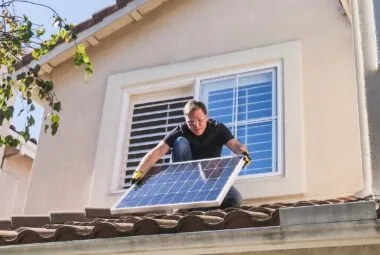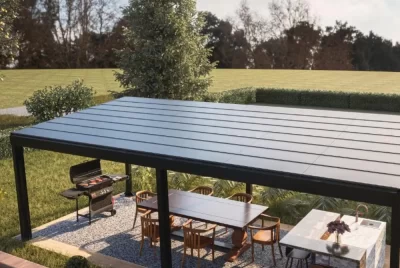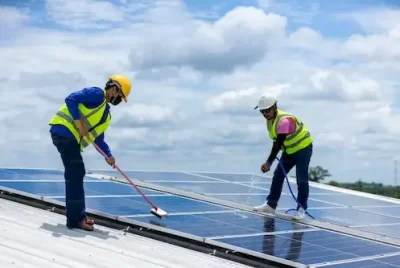Residential Solar Installation 2023
We may earn a commission for purchases made using our links. See our disclosure to learn more.
Harnessing solar energy aka sun electricity, for home use has never been more crucial. However, diving into this transformative energy source requires a profound understanding of the technology behind it. With a firm grasp of this knowledge, you’ll be able to negotiate competently with solar sales representatives and ensure you’re making a wise investment in your home’s energy future. Let’s embark on a journey that will guide you through the intricate world of residential solar installation, making you a solar energy maestro in no time and you’d want to install home solar system right away.
The Core Quartet of a Solar Power System
The heart of a home solar energy system is composed of four principal components:
- Solar Panels
- Solar Inverter
- Racking/Mounting
- Monitoring
Now, let’s unpack each of these components to better understand their functions and variations.
Solar Panels
Think of solar panels as the breadwinners of your solar power family. They work relentlessly under the sun, converting sunlight into DC electricity. Structurally, solar panels consist of a grid of solar cells embedded beneath sheets of incredibly durable glass and supported by a protective frame.
Solar panels come in different variants in terms of cell type and arrangement, including polycrystalline, monocrystalline, half-cut, and shingled cells. Among these, the ‘monocrystalline half-cut’ panels have emerged as a favorite. These panels result from an ingenious idea of slicing the square solar cells in half, thereby enhancing their efficiency and shade tolerance. As a result, they’ve almost monopolized the market.
Solar Inverter
If solar panels are the earners, the solar inverter is the wise elder who directs the flow of the energy produced. These inverters come in two major forms: string inverters (roughly the size of a briefcase) and microinverters (around the size of a paperback book).
String inverters are typically wall-mounted and consolidate all the solar panels. Microinverters, on the other hand, are located on the back or beneath each solar panel.
There’s also a hybrid version called ‘power optimizers,’ offering the best of both worlds. In such a system, a string inverter is coupled with optimizers beneath each or some of the panels.
Microinverters and optimizers offer design flexibility, especially for irregularly-shaped roofs. While it’s often said that they handle shade better than string systems, it’s worth noting that high-end string systems now employ advanced algorithms that manage shade situations just as well.
A unique safety feature of microinverters is their lower operating voltage, reducing risks in case of a faulty residential solar installation. However, such risks can be mitigated by employing an experienced installer and scheduling inspections every five years.
Racking/Mounting
While solar panels and inverters get all the limelight, the humble racking system silently does its job of connecting the panels to your roof. Essentially a collection of bolted aluminium pieces, racking comes in different brands, with premium options like Radiant offering more design flexibility and enhanced durability.
Consumption Monitor
The consumption monitor, a compact device located in your switchboard, measures how much electricity is being fed to or drawn from the grid. Though not essential, having one is highly recommended, as it allows you to monitor not just the solar energy produced but also its consumption.
The Significance of Quality Residential Solar Installation
A stellar installation process of sun electricity is vital in ensuring optimal performance from your solar power system. Even superior brands can fail if mishandled by an inexperienced installer, leading to unreliable and potentially unsafe setups. So how do you ensure you’re hiring the right installer? Here’s a quick checklist:
- Verify their reputation across multiple review websites.
- Pay special attention to 1-star reviews. They often reveal the most about a company’s professionalism.
- Consistency is key. Look for a difference of less than 0.2 stars in their average rating across platforms like Facebook, Google, SolarQuotes, and others.
Optimizing Your Solar Electricity Generation
Understanding the dynamics of solar panel orientation is crucial in reaping maximum benefits from your solar power system. The sun’s path dictates the energy production pattern of your panels:
- East-facing panels yield more power in the morning.
- West-facing panels excel in the afternoon.
- North-facing panels generate the most energy overall.
- East and west-facing panels produce about 15% less energy annually compared to north-facing ones.
Despite this, east and west-facing panels can offer more savings for households with working members as their energy generation peaks coincide with typical work hours. This better aligns with energy consumption patterns, thereby accelerating payback time.
In the past, it was believed that panels needed to be north-facing to justify the investment in solar. However, given the drastic price reductions in recent years, you can achieve excellent returns from east or west-facing panels, or even a mix of north, east, and west-facing ones.
Even south-facing panels, which produce about 30% less energy than north-facing ones, can still offer a reasonable payback period of less than seven years.
Understanding Energy Utilization in Your Home
At any given time, your solar system will be in one of two operating modes:
- The system is generating more solar power than your home needs.
- Your home is using more power than your solar system is generating.
Deciding on the Size of Your Solar System
The rule of thumb is to install a home solar system as much as you can accommodate and afford. The maximum capacity of panels while residential solar installation will depend on factors like roof space availability and limits set by your local electricity network.
Opting for a larger solar system is almost always beneficial. The flexibility to add more panels to an existing system is usually limited, and you might find your energy needs growing over time, especially with the advent of electric cars and home batteries. So, consider future-proofing your home when choosing your system’s size.
Calculating the Savings and Payback of Your Solar System
Several factors contribute to the savings and payback period of your solar system:
- The size of your system (in kW)
- The annualized output of your system
- Your ‘self-consumption ratio,’ or the proportion of solar electricity you use vs. export.
- Your feed-in tariff, or the rate at which your retailer pays you for excess energy sent back to the grid.
- Your usage tariff, or what you pay for grid electricity.
The principal way a home solar energy system saves money is by offsetting grid electricity usage. Every kilowatt-hour (kWh) generated by your solar system reduces your need to draw from the grid, thereby saving you money.
In cases where your system generates excess energy that gets sent back to the grid, your electricity retailer will pay you a feed-in tariff. However, the savings from self-consumption usually significantly exceed the returns from feed-in tariffs. Hence, the more energy you use from your solar system, the greater the savings.
Bottom Line
To conclude, investing in a solar power system for your home is a decision that requires deep knowledge and understanding. Armed with this guide on residential solar installation, you are now well-equipped to make an informed choice, ensuring your switch to renewable energy is smooth, cost-effective, and rewarding.
Read more interesting information about solar power on Solar Power Knowledge Hub




